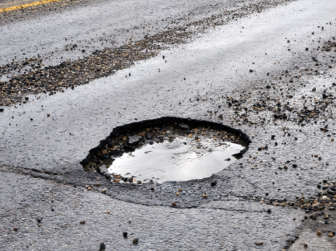Ever been driving on the highway and you look in your rear-view mirror only to be alarmed that there’s suddenly a car right behind you, and it’s way too close? That’s called tailgating. And not only is it extremely annoying, but it’s also very dangerous.
With an estimated road accident death rate of 25 deaths per 100,000 people, it goes without saying at all South African motorists should do their part to help ensure safety on the roads. It’s important that we all take responsibility for our driving to avoid more carnage on our roads.
Tailgating is considered high-risk driving because it doesn’t allow enough reaction time if something happens to the car in front of you. Driving too closely behind another car is one of the main causes of rear-end crashes.
A safe following distance is usually about two to three seconds or having two to three car-lengths between your car and the one in front of you. If you’re driving in rain, increase this gap. If the car in front of you suddenly brakes, a safe following distance gives your brain enough time to register the incident, and time for your body to react and ultimately, for your car to respond. If you are tailgating, you might not be able to stop in time.
 There are two types of tailgaters: deliberate and passive.
There are two types of tailgaters: deliberate and passive.
Deliberate tailgaters use this as a bullying tactic, to intimidate you and to get you to move out of their way as quickly as possible. They are usually aggressive drivers.
With road rage a real concern on South Africa’s roads, your safest option is to take a deep breath and to move out of the way as quickly as possible. As tempting as it might be, don’t provoke the tailgater and just let him go. Drive defensively, not aggressively.
It might be tempting to gently press on your brakes, to give the tailgater a message. Not only could this spark a road rage incident, but if your tailgater isn’t quick to respond, it could cause a collision. Is it really worth it?
Passive tailgaters are simply not paying attention, or they might be inexperienced drivers who are unaware of the danger they might be causing.
If you have a passive tailgater behind you, it might be tempting to drive faster, to put some space between you – but again, rather drive defensively. Be sure to keep a safe following distance between you and the car in front of you. By speeding up, you might close the gap and in turn you become the tailgater for the car ahead.
If possible, move out of the way and let the driver pass. Alternatively, gradually slow down. That way, if you do need to apply brakes, the driver behind you might notice and take quick steps to prevent a collision. If you do crash, at least it will be at a slower speed with potentially less damage.
Tailgating is illegal, and you could get a fine for doing so. However, no matter how safely you drive, you cannot control how others drive, which is why Fully Comprehensive Car Insurance is essential for most motorists.
Comprehensive Coverage offers coverage for your vehicle and protects you from damaging other property. When your car is financed, most banks will require Comprehensive Coverage. This policy covers your vehicle from fire, theft, hijacking, natural disaster, or an accident with another vehicle regardless of fault. In the event of a claim, you are only responsible for the excess to repair or replace your vehicle.
If you are in an accident that is partially your fault, your insurance will help you file the claim and settle your damage. Visit the MotorHappy Knowledge Centre to find out more about the different types of car insurance available to you.
The new soft top Fiat 500X stands out in a crowd
Meet SA’s Car of the Year: The BMW 7 Series


